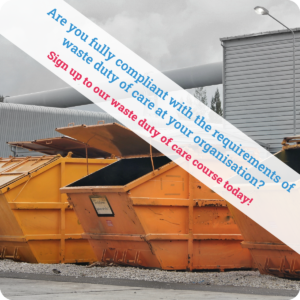When chemicals or other hazardous substances are used at work, it can put people’s health at risk. Therefore, employers are required to control exposure to hazardous substances to prevent ill-health. The Compliance People’s consultant Mick Baah looks at the role and importance of training employees on how to safely work with hazardous substances.
Hazardous substances are found in nearly all work environments. These include:
- substances used directly in work activities (e.g. adhesives, paints, cleaning agents);
- substances generated during work activities (e.g. fumes from soldering and welding);
- naturally occurring substances (e.g. grain dust); and
- biological agents such as bacteria and other micro-organisms.
The Control of Substances Hazardous to Health Regulations 2002 (COSHH) is the specific legislation that requires employers to control substances that are hazardous to health. These regulations provide a useful framework of good practice which employers, and sometimes employees, must follow.
An important way for your organisation to maintain control of hazardous substances at work is to make sure that the workforce is educated on these hazardous substances, and importantly, made aware of the risk that may arise while working with them. Notably, employees’ lack of awareness of these risks is a common finding that is picked up during a substantial amount of legal compliance audits.
If employees don’t know what substances are hazardous, or how to use them properly, then the control measures that are put in place during the risk management process for hazardous substances will not be as effective. Therefore, providing essential training for employees to raise COSHH awareness will ensure workers remain safe and healthy.
There is key information that employees need to know with regard to using hazardous substances, as stated in regulation 12 of The Control of Substances Hazardous to Health Regulations 2002 (COSHH). This includes:
- names of the substances that they work with or could be exposed to;
- the hazards and risks that these substances pose;
- the precautions they should take to protect themselves and others;
- how to use personal protective equipment (PPE) and clothing provided;
- workplace exposure limits;
- results of any exposure monitoring and health surveillance; and
- emergency procedures which need to be followed.
When it comes to providing this information, employers should explain the dangers of the hazardous substances to their employees and anyone else who needs to know.
How do you make the above information stick? The CoSHH Regulations require that employers ensure that employees are properly trained, informed and supervised. Just handing them a piece of paper and asking them to sign the bottom of it, may not be enough. So, it is important that any training and information that is relevant to them is delivered in such a way that is understandable. Therefore, the chance that it will be applied to the everyday working practice is improved. Whether this is through a toolbox talk, a training session, or a safe working procedure, it is important that the message is delivered correctly and effectively.
Provision of training, education and information to employees is key element of how an organisation can control and manage substances hazardous to health.
Important questions to ask are:
- Do your employees understand exactly what the dangers of the hazardous substances that they work with are?
- Is the training and information you provide relevant to them, easily understood and applied to the everyday working practice?
If you have identified some areas for improvement, why not get in touch with us? – We can offer a training solution for CoSHH awareness delivered virtually or face-to-face that can be bespoked to your business. Our professional team of consultants will be happy to help you further.
